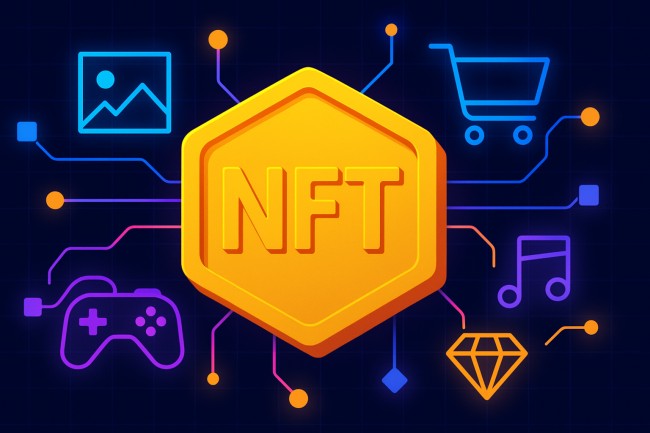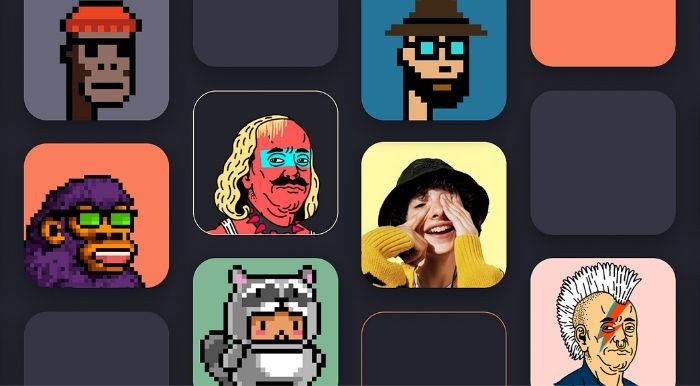
Non-Fungible Tokens (NFTs) have redefined how ownership is perceived in digital environments. These unique digital assets exist on the blockchain and represent proof of authenticity.
NFTs gained traction across multiple sectors, including digital art, gaming, sports collectibles, music rights, and virtual real estate.
What Is an NFT?
An NFT is a cryptographic token stored on a blockchain, designed to be a one-of-a-kind asset. Unlike cryptocurrencies such as Bitcoin or Ethereum, NFTs cannot be exchanged on a one-to-one basis. Each NFT carries distinct metadata and identification codes.
NFTs are typically minted on blockchains like Ethereum, Binance Smart Chain, Polygon, and Solana. The Ethereum ERC-721 and ERC-1155 token standards are the most widely adopted. ERC-721 supports single ownership, while ERC-1155 allows for semi-fungibility and batch transfers.
Why NFTs Are Gaining Popularity
Scarcity and provenance drive value. NFTs provide verifiable proof of ownership and transaction history. Artists, musicians, game developers, and influencers gain direct access to monetization without intermediaries.
NFTs also create secondary income streams. Creators can earn royalties each time their NFTs are resold, thanks to smart contracts. These automated scripts execute conditions without requiring a third party.
Interoperability across platforms is another appeal. NFTs created in one ecosystem can be displayed or traded in others, expanding their utility and exposure.
Core Features of NFTs
- Uniqueness: Each NFT is designed to be distinct. The token ID, metadata, and linked asset combine to form a digital fingerprint. No two NFTs are identical, even if they reference similar content. This individuality underpins their value, especially in digital art and collectibles.
- Indivisibility: NFTs cannot be broken into fractions. A single token cannot be split or shared the way cryptocurrency can. Ownership transfers only in whole units. This makes NFTs ideal for assets that need to retain full rights and representation, such as digital certificates or music rights.
- Authenticity and Ownership Verification: Ownership is recorded on a blockchain ledger. Every transaction is time-stamped and immutable. Buyers can verify the token’s origin, previous owners, and creator. This builds trust and removes the need for third-party validation.
- Provenance and Scarcity: NFTs can be programmed to be one-of-a-kind or part of a limited series. That scarcity enhances value. Blockchain records confirm who created the asset and how many exist. These details are permanent and public, boosting the credibility of collectibles and rare digital assets.
- Programmability: Smart contracts add flexible logic to NFTs. Creators can embed royalties, access limits, unlockable content, and expiration conditions. These programmable traits allow NFTs to evolve from static images into interactive assets with real-world functions.
- Interoperability: NFTs built using standards like ERC-721 or ERC-1155 are compatible across wallets, games, marketplaces, and virtual environments. This cross-platform behavior broadens utility and improves market liquidity.
- Portability: Stored in blockchain wallets, NFTs can be transferred globally without intermediaries. Ownership moves peer-to-peer, cutting out the middle layer and making digital commerce faster and borderless.
- Transparency: Blockchain transactions are public. Anyone can audit NFT movements, view token metadata, or inspect contract code. Transparency reduces fraud and allows communities to self-regulate.
- Security: NFTs rely on blockchain encryption. Assets are secured by cryptographic protocols and can’t be tampered with once minted. Decentralized hosting methods, like IPFS, reduce the risk of loss from single-point server failures.
- Liquidity: NFTs can be traded on open marketplaces 24/7. Platforms like OpenSea or Blur allow users to buy, sell, or bid on NFTs with ease. This constant activity helps creators earn income and collectors find new opportunities.
What Is an NFT Marketplace?
An NFT marketplace is a digital platform where NFTs are minted, listed, bought, and sold. These platforms serve as the meeting ground for creators and collectors. Marketplace functionality often includes auctions, fixed-price sales, wallet integrations, and royalty distribution.
Some examples include OpenSea, Rarible, Foundation, Magic Eden, and NBA Top Shot. Each platform may target specific audiences or types of content.
Key Components of NFT Marketplace Development

1. Smart Contracts
Smart contracts handle the core logic of minting, trading, bidding, and royalty payments. These contracts reduce the risk of fraud and minimize operational overhead. Solidity is the most common language used for writing Ethereum smart contracts.
2. Wallet Integration
Users need digital wallets to store NFTs and interact with the marketplace. Wallets like MetaMask, WalletConnect, and Coinbase Wallet are widely supported. Secure authentication and encryption are mandatory.
3. Minting Engine
The minting module allows users to create NFTs. This includes uploading files, adding metadata, setting royalties, and selecting blockchain networks. IPFS (InterPlanetary File System) is often used for decentralized storage.
4. Search and Filter System
Efficient filtering by categories, creators, blockchain networks, and price ranges enhances usability. Real-time search ensures users can discover assets easily.
5. Dashboard for Creators and Collectors
Creators require tools to manage their collections, monitor sales, and withdraw funds. Collectors benefit from watchlists, portfolio tracking, and transaction histories.
6. Admin Panel
Administrators oversee platform performance, user disputes, content moderation, and revenue analytics. Anti-spam filters and reporting mechanisms prevent abuse.
Frontend and Backend Technology Stack
- Frontend: React.js, Next.js, Vue.js
- Backend: Node.js, Express.js
- Blockchain: Ethereum (using Web3.js or Ethers.js), Polygon, Solana
- Databases: MongoDB, PostgreSQL
- Storage: IPFS, AWS S3
- Authentication: OAuth2, JWT, wallet signature-based login
Each technology serves a specific function. React offers reusable UI components. Web3.js bridges communication with Ethereum. IPFS decentralizes file hosting. MongoDB handles metadata and user profiles.
Smart Contract Standards
- ERC-721: Single asset ownership
- ERC-1155: Multi-token standard
- BEP-721: Binance Smart Chain equivalent
- SPL: Solana’s token standard
These standards ensure compatibility across dApps, wallets, and marketplaces.
NFT Development Process
- Define Use Case: The use case determines the structure. Art marketplaces, music platforms, and gaming ecosystems each need tailored logic.
- Choose Blockchain: Factors include transaction fees, speed, and community support. Ethereum remains dominant but faces high gas fees. Polygon and Solana offer scalability.
- Design Smart Contracts: Contracts must be secure, optimized, and audited. They define minting rights, royalty percentages, and ownership transfer rules.
- Build Frontend and Backend: User-facing pages require responsive design. Backend APIs manage asset metadata, track activity, and control minting status.
- Deploy and Test: Testnets such as Ropste help simulate real-world scenarios before mainnet launch. QA includes smart contract testing, UI responsiveness, and wallet connections.
- Launch and Maintain: After deployment, ongoing monitoring, updates, and user support are essential. Analytics tools help track performance and adoption.
Common NFT Marketplace Monetization Models
- Listing Fees: Charged per asset upload
- Transaction Fees: Percentage of each sale
- Premium Accounts: Offer exclusive features or higher exposure
- Royalties: Earned by platform on secondary sales
- Subscription Plans: Recurring revenue for creators or collectors
These models offer flexibility to align with market trends and user behavior.
Security Measures
- Smart Contract Audits: Prevent logic flaws and vulnerabilities
- Two-Factor Authentication: Secures user logins
- Rate Limiting: Stops automated attacks
- SSL Encryption: Ensures safe data transfer
- Regular Patching: Keeps dependencies up to date
A secure platform builds trust and increases user retention.
NFT Use Cases Expanding Beyond Art
Gaming: NFTs are transforming gaming into an economic system. In play-to-earn models, in-game assets such as characters, weapons, or skins are tokenized. These assets carry real-world value, can be resold, and can even move across games when supported.
Music: Musicians tokenize tracks, albums, backstage passes, and exclusive content. NFTs allow direct-to-fan sales, eliminate middlemen, and embed royalties on every resale. Some tokens also include event access or ownership of master recordings.
Fashion: Digital fashion is rising through branded wearables and AR-enabled designs. Brands use NFTs to offer exclusive items, proof-of-purchase badges, and collectibles for virtual avatars. These assets gain traction in metaverse platforms and digital storefronts.
Education: Institutions issue NFT-based digital diplomas, certificates, and course completions. These records are tamper-proof and easy to verify. They reduce paperwork and help streamline recruitment and credential verification.
Real Estate: Virtual properties in metaverse projects are sold as NFTs. Owners can trade land, lease space, or build virtual structures. Projects like Decentraland and The Sandbox showcase how NFTs support virtual land economies.
NFTs bring transparency, resale liquidity, and programmable logic to each of these sectors. Their use continues to evolve as platforms experiment with hybrid physical-digital experiences.
NFTs add value to these sectors by verifying authenticity, enabling ownership, and providing tradable utility.
Future Trends in NFT Marketplace Development
- Cross-chain Compatibility: NFTs accessible across blockchains
- Fractional Ownership: Splitting NFTs into tradable units
- DAO Governance: Community-driven marketplace decisions
- AI-Powered Curation: Personalized content discovery
- Environmental Optimizations: Use of energy-efficient blockchains
These trends aim to improve inclusivity, reduce entry barriers, and enhance creator autonomy.
Conclusion
NFT and NFT marketplace development has evolved into a structured, streamlined process. With modern tools and frameworks, building platforms around NFTs becomes practical and rewarding.
Decentralized ownership models empower creators and redefine digital commerce. The rising demand signals continued innovation in how digital content is owned, shared, and valued.
Also Read:

